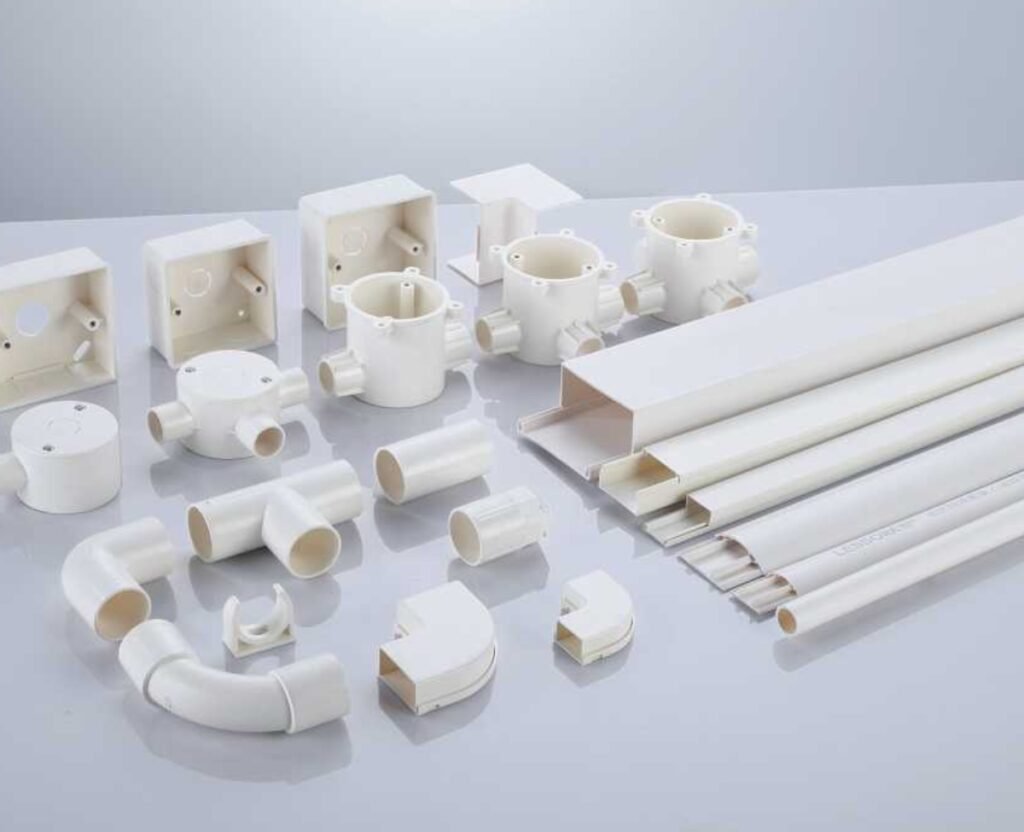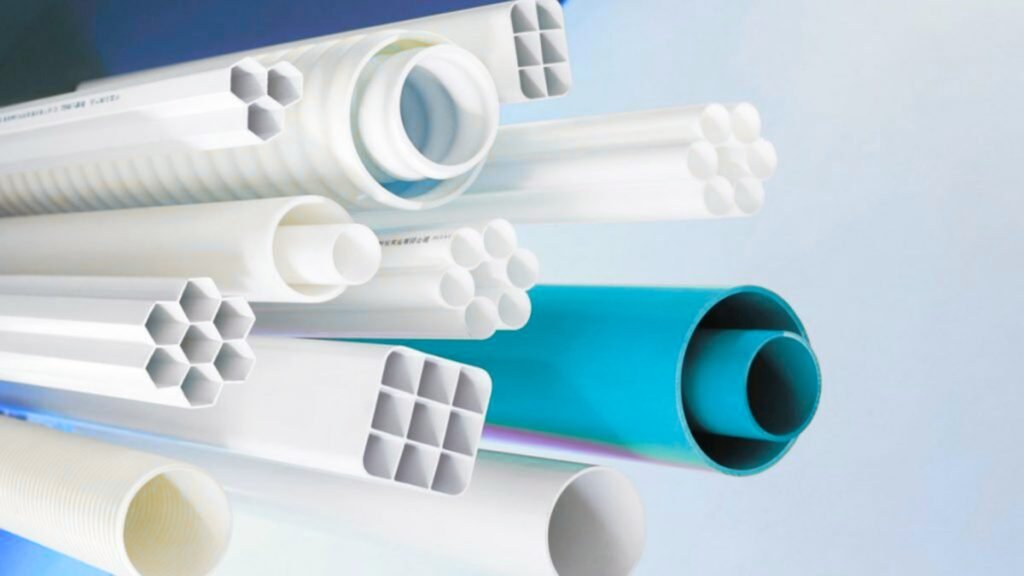Conduiting pipes are protective, hollow tubes designed to channel and safeguard electrical wires and cables within various environments. These pipes shield against potential damage caused by physical impacts, moisture, and environmental factors. Available in a wide range of materials and designs, conduit systems are critical for maintaining organized, safe, and efficient wiring solutions across industrial, commercial, and residential setups. Their versatility ensures they meet diverse project requirements while adhering to stringent safety standards.
Studies reflect their effectiveness in reducing electrical hazards and improving operational longevity. Analysts emphasize their adaptability, with flexible and rigid variants suited for anything from tight spaces to outdoor conditions. Reports also underline their compliance with codes like the NEC, ensuring safety and durability in regulated systems. Past findings consistently show that these pipes contribute to better project outcomes and lower long-term maintenance costs.
This guide explores the types of conduiting pipes, their various applications, and the benefits they provide. By the end, you’ll have a clear understanding of why these conduits are indispensable in today’s world.
What Are Conduiting Pipes?
Conduit pipes are hollow tubes designed to shield and route electrical cables and wires within structures. These pipes provide robust protection against environmental damage, accidental impacts, and interference. Commonly used in commercial, industrial, and residential projects, conduit pipes ensure smooth and organized wiring installations under strict safety standards.
Modern conduit systems comply with highly detailed regulations, such as the National Electrical Code (NEC). Different materials, sizes, and designs accommodate specific needs based on project requirements.
Features of Conduiting Pipes
- Structural Protection: Conduits safeguard cables from physical damage.
- Moisture Resistance: Some conduits block water ingress, ideal for underground or wet environments.
- Insulation: Non-metallic conduits avoid electrical hazards.
- Adaptability: Flexible conduits allow routing around obstacles.

Types of Conduiting Pipes
Different materials and designs provide conduit solutions suitable for all kinds of installations. Here’s a breakdown of key categories.
Rigid Metal Conduit (RMC)
RMC is constructed from galvanized steel or aluminum. It stands out for its exceptional strength.
- Strength: Highly resistant to heavy impacts.
- Applications: Used frequently in industrial settings.
- Drawback: Bulky and more expensive.
Intermediate Metal Conduit (IMC)
Designed for outdoor applications or areas exposed to moisture, it balances strength and cost-efficiency.
- Features: Thinner walls reduce weight.
- Application Areas: Suitable for underground installations.
Electrical Metallic Tubing (EMT)
EMT, also known as “thin-wall,” is a cost-effective and lightweight solution.
- Advantages: Easy to bend for quick installation.
- Downside: Vulnerable to physical damage.
- Best Use: Residential or light commercial projects.
Flexible Metal Conduit (FMC)
Ideal for areas with vibration or movement, FMC is built for flexibility and easy adjustments, which make it highly versatile for tight spaces.
- Key Feature: Enables bending by hand.
- Use Cases: Commonly connects to motors or machinery.
Rigid Non-Metallic Conduit (RNC)
Non-metallic conduits, frequently made of PVC, offer corrosion resistance and insulation from electric charges. These are commonly used in environments requiring burial or underwater applications.
- Benefits: Lightweight and cost-effective.
- Drawbacks: Limited impact resistance compared to metal.
Electrical Nonmetallic Tubing (ENT)
ENT is a corrugated plastic conduit known for extreme flexibility. Contractors install ENT within walls or concrete for projects that do not involve exposure to the open air.
- Unique Quality: Flame-resistant yet not fire-rated.
- Application: Ideal for concealed installations.
Fiberglass Conduit (RTRC)
Also called Reinforced Thermosetting Resin Conduit, RTRC excels in conditions requiring long-term corrosion resistance. These systems also handle extreme temperature variances.
- Advantages: Very lightweight and durable.
- Application Scenarios: Used in tunnels, transportation projects, and coastal areas where moisture conditions are harsh.
Liquidtight Flexible Metal Conduit (LFMC)
LFMC combines the flexibility of FMC with a waterproof plastic coating. This feature makes it suitable for both damp and dry environments.
- Strengths: Ideal for outdoor usage, prone to moisture exposure.
How to Use Conduiting Pipes
The choice of conduit pipes depends on factors like the environment, type of wiring, and applicable safety codes. Following proper installation practices ensures optimal performance and minimization of risks.
Key Considerations
- Application Needs: Are you protecting power cables or communication lines?
- Weather Conditions: Will the conduit face rain, water ingress, or sunlight?
- Mechanical Stress: High-impact resistance required? Choose RMC.
- Space Availability: Tight spaces may necessitate ENT or FMC.
Proper fittings ensure a secure connection between conduits. The electrician adds couplings, elbows, and connectors for smooth wire routing.
Benefits of Conduiting Pipes
Why do projects turn to conduits? Their advantages make them indispensable for anyone planning extensive electrical layouts.
Enhanced Safety
Conduits shield wires from fires, corrosion, and accidental contact. Fire-rated conduits, like phenolic or fiberglass systems, protect against flammable conditions.
Durability
Conduits, especially metallic ones, last for decades under normal conditions.
Ease of Retrofitting
Modifications to wiring systems become smoother when conduits allow wires to be pulled out and replaced easily. Plastic or flexible conduits simplify repairs in tight layouts.
Clean Installation
Exposed wiring creates an unsightly and unsafe jumble.
Regulatory Compliance
Conduits meet global electrical standards like NEC Article 352. The following codes ensure legal compliance, reducing liability risks.
Cost Efficiency
High-quality conduits save repair costs and extend wiring life spans. For low-budget projects, PVC or aluminum conduits balance performance and affordability.
Common Applications
Data Centers
Modern hubs for computing power require conduits that minimize electromagnetic interference (EMI). Fiberglass or metallic options cater to consistent high performance.
Utility Systems
Government infrastructure uses robust conduits for uninterrupted power and communication along highways and rural locations.
Construction Projects
Both commercial offices and high-rise apartments install conduits within walls and slabs for concealed wiring. Fire-resistant models are often mandated in such settings.
Hazardous Environments
For petrochemical plants, factories, or mines, explosion-proof conduit systems protect critical installations from sparks or fire risks.

